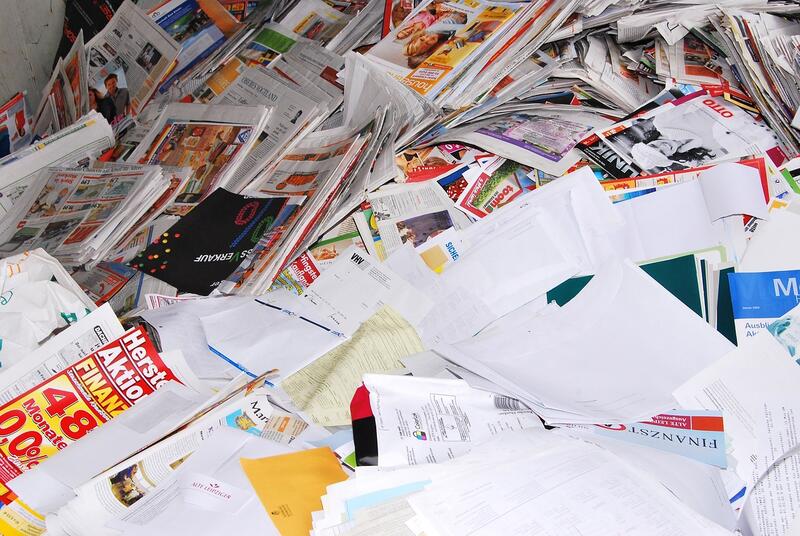Strategies for a Low-Carbon Recovery of sorted materials: Decarbonization Insights
"Decarbonization Insights" presents strategies for achieving a low-carbon recovery of sorted materials, highlighting the importance of reducing emissions in the waste management sector.

Decarbonisation refers to the process of reducing carbon emissions and transitioning to a low-carbon economy. The Recovery of Sorted Materials sector plays a crucial role in decarbonisation efforts as it involves the collection, sorting, and recycling of waste materials, which helps to reduce the amount of waste sent to landfill and conserve natural resources. In this article, we will explore the importance of decarbonisation in the Recovery of Sorted Materials sector, the main sources of carbon emissions, strategies to reduce carbon emissions, challenges facing decarbonisation, and the implications of decarbonisation for the sector.
Importance of Decarbonisation in the Recovery of Sorted Materials Sector
The Recovery of Sorted Materials sector is a critical component of the circular economy, which aims to reduce waste and promote resource efficiency. This sector is responsible for the collection, sorting, and recycling of waste materials such as paper, plastics, metals, and glass. The sector plays a significant role in reducing greenhouse gas emissions by diverting waste from landfill, which reduces methane emissions. Methane is a potent greenhouse gas that is 28 times more potent than carbon dioxide over a 100-year time frame. Therefore, by reducing methane emissions, the Recovery of Sorted Materials sector contributes to decarbonisation efforts.
Furthermore, the Recovery of Sorted Materials sector is an essential contributor to the economy, providing jobs, and generating revenue through the sale of recycled materials. Decarbonisation efforts in the sector can, therefore, create new opportunities for economic growth and job creation.
Main Sources of Carbon Emissions in the Recovery of Sorted Materials Sector
The Recovery of Sorted Materials sector is not a significant source of direct carbon emissions. However, the sector contributes to carbon emissions indirectly through the energy consumed during the collection, sorting, and recycling of waste materials. The main sources of carbon emissions in the sector include:
- Energy consumption: The Recovery of Sorted Materials sector relies on energy-intensive processes such as shredding, baling, and transportation of waste materials. This energy consumption contributes to carbon emissions, primarily if the energy is sourced from fossil fuels.
- Landfilling: Although the Recovery of Sorted Materials sector diverts waste from landfill, some materials cannot be recycled and end up in landfill. Landfilling of waste materials contributes to carbon emissions through the decomposition of organic materials, which generates methane.
Strategies to Reduce Carbon Emissions in the Recovery of Sorted Materials Sector
To reduce carbon emissions in the Recovery of Sorted Materials sector, several strategies can be implemented, including:
- Energy efficiency: The sector can improve energy efficiency by implementing energy-saving measures such as using energy-efficient equipment, optimizing processes, and using renewable energy sources such as solar and wind.
- Waste reduction: The sector can reduce waste by implementing waste reduction measures such as reducing packaging, promoting reuse, and designing products for recyclability.
- Landfill diversion: The sector can increase landfill diversion by improving recycling rates, implementing composting and anaerobic digestion, and developing new technologies for waste recovery.
- Carbon offsetting: The sector can offset carbon emissions by investing in carbon offset projects such as reforestation, renewable energy, and energy efficiency projects.
Challenges Facing Decarbonisation in the Recovery of Sorted Materials Sector
Despite the potential benefits of decarbonisation, several challenges face the Recovery of Sorted Materials sector. These include:
- Lack of infrastructure: The sector requires significant investment in infrastructure such as recycling facilities, composting and anaerobic digestion facilities, and waste-to-energy facilities. The lack of infrastructure can hinder decarbonisation efforts.
- Limited funding: The sector often relies on government funding and subsidies, which may not be sufficient to support decarbonisation efforts fully.
- Limited public awareness: The public's lack of awareness and understanding of the importance of waste reduction and recycling can hinder decarbonisation efforts.
- Technological barriers: The sector requires the development of new technologies to improve recycling rates and increase landfill diversion. The development of new technologies can be costly and time-consuming.
Implications of Decarbonisation for the Recovery of Sorted Materials Sector
Decarbonisation efforts in the Recovery of Sorted Materials sector have several implications, including:
- Job creation: Decarbonisation efforts can create new job opportunities in the sector, particularly in the development of new technologies and infrastructure.
- Economic growth: Decarbonisation efforts can stimulate economic growth by promoting the development of new technologies, infrastructure, and markets for recycled materials.
- Environmental benefits: Decarbonisation efforts can reduce greenhouse gas emissions, conserve natural resources, and reduce waste sent to landfill, resulting in environmental benefits.
Conclusion
Decarbonisation in the Recovery of Sorted Materials sector is crucial in reducing greenhouse gas emissions and promoting the circular economy. The sector plays a significant role in reducing methane emissions by diverting waste from landfill, and decarbonisation efforts can create new opportunities for economic growth and job creation. However, several challenges face decarbonisation efforts, including the lack of infrastructure, limited funding, and technological barriers. To achieve decarbonisation in the sector, it is essential to implement strategies such as energy efficiency, waste reduction, landfill diversion, and carbon offsetting.